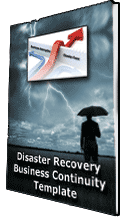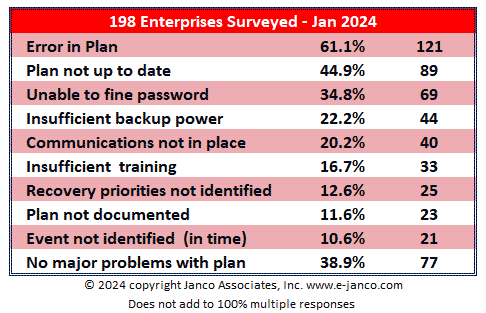10 steps for Disaster Clean up
How to dry out and clean up after Hurricane or Flood
After an event like a hurricane many face the process of how to clean up and dry out desktops, mobile devices, and other electronics, in addition to office furniture and critical documents
What do you do to clean things up? Some tips on electronic and office clean up are:
-
Wet objects (electronic) - Disconnect from the power source and do not turn it on. In the case of disk drives or other electronic storage devices - inventory all of them and label them. Create a log of all objects recovered, actions taken, and location. Have a disaster clean-up specialist be the one who looks at what can be recovered.
Small items like cell phones and mobile device can be put in rice. The rice aborbs the mositiure and after a day or two they can be turned on. In most cases this works.
-
Wet objects (non-electronic) - Rinse with clear water or a fine hose spray. Clean off dry silt and debris with soft brushes or dab with damp cloths. Try not to grind debris into objects; overly energetic cleaning will cause scratching. Dry with a clean, soft cloth. Use plastic or rubber gloves for your own protection.
-
Drying Objects - Air dry objects indoors if possible and use portable fans to move the air. Sunlight and heat may dry certain materials too quickly, causing splits, warping, and buckling. If possible, remove contents from wet objects and furniture prior to drying. Storing damp items in sealed plastic bags will cause mold to develop. If objects are to be transported in plastic bags, keep bags open and air circulating.
-
Mold Prevention and Cleanup - Exposure to molds can have serious health consequences such as respiratory problems, skin and eye irritation, and infections. The use of protective gear, including a respirator with a particulate filter, disposable plastic gloves, goggles or protective eye wear, and coveralls or a lab coat, is therefore essential. In order to inhibit the growth of mold and mildew you must reduce humidity. Increase air flow with fans, open windows, air conditioners, and dehumidifiers. Moderate light exposure (open shades, leave lights on in enclosed areas) can also reduce mold and mildew. Remove heavy deposits of mold growth from walls, baseboards, floors, and other household surfaces with commercially available disinfectants. Avoid the use of disinfectants on historic wallpapers. Follow manufacturers' instructions, but avoid splattering or contact with objects and wallpapers as disinfectants may damage objects.
-
Broken Objects - If objects are broken or begin to fall apart, place all broken pieces and detached parts in clearly labeled, open containers. Do not attempt to repair objects until completely dry or, in the case of important materials, until you have consulted with a professional conservator.
-
Paper Materials - Documents, books, photographs, and works of art on paper are extremely fragile when wet; use caution when handling. Free the edges of prints and paper objects in mats and frames, if possible. These should be allowed to air dry. Rinse mud off wet photographs with clear water, but do not touch surfaces. Wet books and papers should also be air dried or kept in a refrigerator or freezer until they can be treated by a professional conservator.
-
Office Furniture - Furniture finishes and painting surfaces may develop a white haze or bloom from contact with water and humidity. These problems do not require immediate attention; consult a professional conservator for treatment. Textiles, leather, and other "organic materials will also be severely affected by exposure to water and should be allowed to air dry. Shaped objects, such as garments or baskets, should be supported by gently padding with toweling or unlinked, uncoated paper. Renew padding when it becomes saturated with water. Dry clean or launder textiles and carpets as you normally would.
-
Art Work - Remove wet paintings from the frame, but not the stretcher. Air dry, face up, and away from direct sunlight.
-
Metal Objects - Rinse metal objects exposed to flood waters, mud, or silt with clear water and dry immediately with a clean, soft cloth. Allow heavy mud deposits on large metal objects, such as sculpture, to dry. Caked mud can be removed later. Consult a professional conservator for further treatment.
Three days after a major hurricane, none of the co-location data centers in the effected area had updated the status of their facilities on their web sites. Of the 15 (out of 40) we tried to call only two answered their phones. This highlights the things that were missed by these providers:
- Crisis communications: During the event, the core messages and communications to employees, customers, investors, and the media were lacking.
- Business continuity: Many plans did not account for the management and logistical process for continuing or resuming, and recovering interrupted critical business functions.
- Crisis management: They did not move quickly and efficiently to implement your crisis management plan and teams to pro actively understand the potential impacts to people, property, and operations, and make policy/strategy decisions to address and manage those impacts.
- Information technology/disaster recovery: Recovery should include ensuring the availability of networks, applications, and data. This will help support business continuity, including work-from-home and other strategies, However with the amount of flooding and wind damage, this was not possible.


